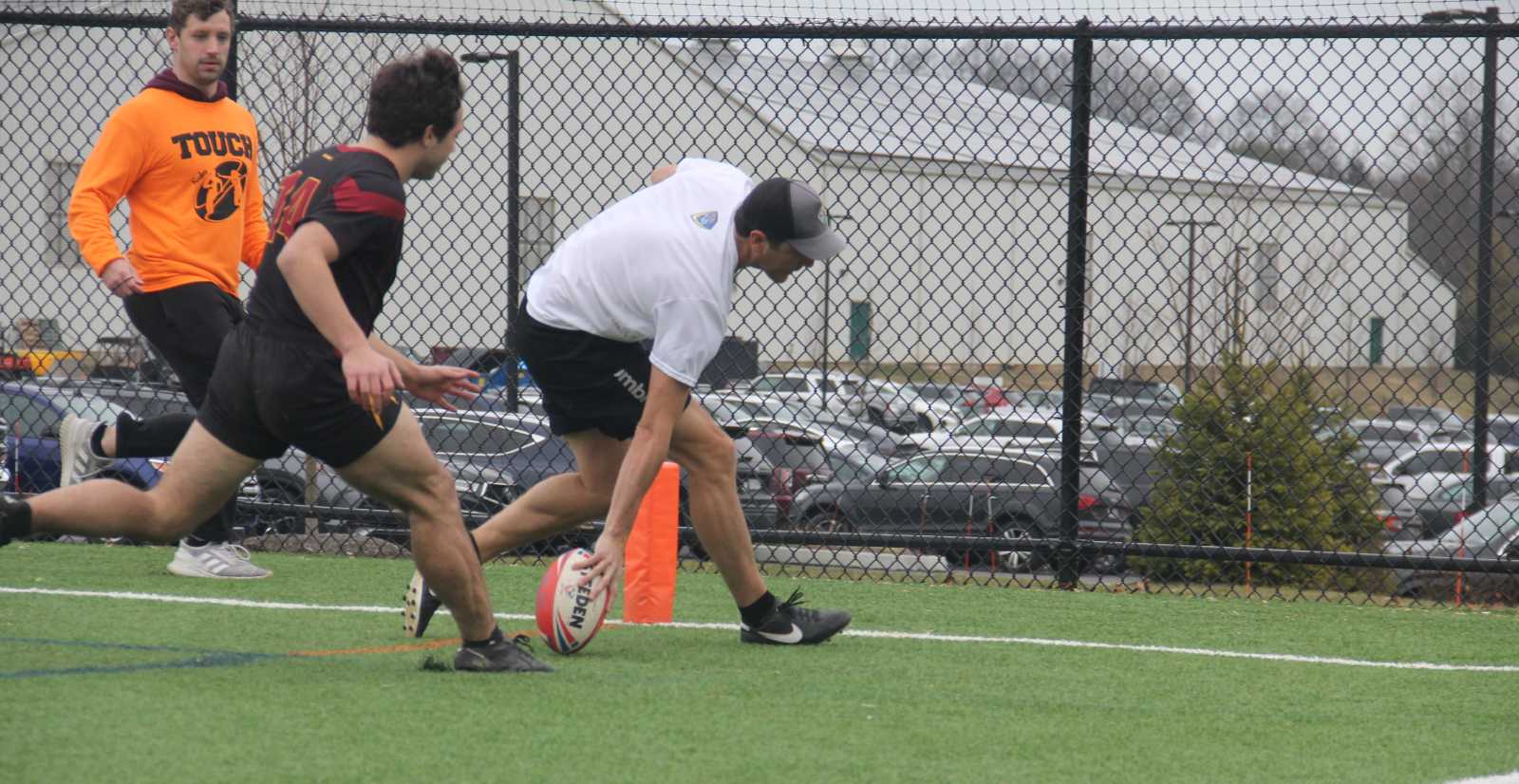Join Philly Touch
Sign up to learn more information, get practice schedule updates, and hear about upcoming social events!
Below is a very high-level introduction to the rules of touch rugby according to the FIT. Variations and additional rules may apply depending on the level of competition and specific tournament regulations. For more detailed rules see the Federation of International Touch (FIT) 5th edition of international playing rules (pdf) .
The objective of Touch is to score tries by advancing the ball into the opponent’s in-goal area and grounding it under control.
Each team consists of six players on the field at any given time, with unlimited substitutions allowed.
The playing field is rectangular, with dimensions typically 50x70 meters. The field is marked with try lines at each end, a 7meter-to-try line mark, and a halfway line dividing it into two halves.
A try is scored when a player, while in possession of the ball, touches it to the ground in the opponent’s in-goal area. A try is worth one point. The team that scored the try must bring the ball back to mid-field.
The primary method of halting the attacking team’s progress is by making a touch. A touch occurs when a defending player makes contact with an attacking player who is holding the ball. The touch can be made by the defending player anywhere on the body, clothing, or ball of the attacking player. Note, the attacking player can initiate a touch.
After six touches have been made, possession of the ball is turned over to the defending team. This rule encourages continuous play and prevents teams from monopolizing possession indefinitely.
The ball must be passed backwards. A forward pass will result in a penalty to the defending team.
After a touch is made, the attacking team must perform a roll ball to restart play. The player touched must place the ball on the ground between their legs at the point of touch being made and step over. The ball is allowed to roll backwards up to one meter. A teammate will pick it up and continue the play.
The acting half (or dummy half) cannot be touched with the ball or score a try. If the dummy is touched, it results in a turnover.
Players on the defending team must retreat a minimum of 7 meters from the location of the roll ball. Failure to do so results in an offside penalty, with the attacking team awarded a penalty.
Touch Rugby is a non-contact sport, meaning players are not allowed to physically tackle or impede their opponents. Any intentional contact or aggressive behavior is penalized.
There is no kicking in touch rugby.
Sign up to learn more information, get practice schedule updates, and hear about upcoming social events!
